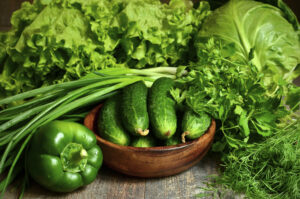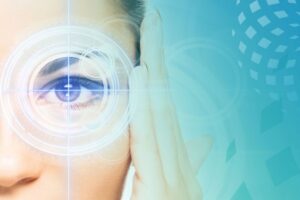For eye care
For eye care
Today we’re going to talk a little bit about eye care, it’s important to remember to protect your eyes and rest them regularly. For eye care when you are using your computer, cell phone or tablet, it is necessary to take regular breaks and use blue light filters to protect your eyes. If you feel pain or discomfort, it is very important that you see an ophthalmologist to check it out, so I start this article by telling you to take good care of your eyes!
Recent estimates suggest that about 253 million people worldwide live with some type of visual impairment. The numbers are growing every day, with an estimated 2.2 billion people in the world living with sight problems, according to data from the World Health Organization. This means that about 1 in 7 people worldwide suffer from eye diseases. The most common eye defects are myopia, hyperopia, astigmatism, and presbyopia.
The good news is that for eye care, eyewear manufacturers now offer modern, stylish models that are very comfortable to wear. In addition, sunglasses are increasingly popular, allowing you to match your style to your visual fit. Today you also have the option of contact lenses and even surgery in some cases.
Food for eye care
Diet is related to eye health. A healthy diet rich in nutrients such as fruits, vegetables, fish, whole grains, beans, and other healthy foods can help improve eye health. Foods rich in omega-3s, such as fish oil, can help reduce the risk of macular degeneration and other eye diseases. Also, avoid fatty, sugary, and processed foods.
Some care to take is to get enough sun to get enough vitamin D, wear sunglasses to protect the eyes from UV damage, these are the small actions that help in eye care.
The anatomy of the eyes
It is an almost circular organ, about 2.5 cm in diameter, weighs 7 to 8 grams, is inserted in the bony cavity of the skull, and is moved by the joint action of 6 muscles.
Did you know that the wall of the eye consists of three layers? The outer one called the “sclera”, the white part, is on average 1 mm thick. The front part of this layer has its transparency and is called
“cornea” The middle layer called the “choroid” is a membrane rich in blood vessels which nourishes the eye. It has in its anterior part the “Iris” which gives color to the eyes, with a central hole called “pupil” acting as a diagram, controlling the amount of light to be penetrated into the eye.
These are somewhat technical terms that are important for us to know at least the basics to understand how our eyes work for the best eye care.
The third layer is the “retina” which forms the place where visual perception begins, receives light impulses, transmits these ideas to the brain via the optic nerve, which determines which rays emit certain rays through the visual cortex.

Eye Care Lenses
The best glass lenses vary according to your needs and wishes. There are different types of glasses, such as contact lenses, sunglasses, prescription glasses, multifocal lenses, and daily wear glasses. Contact lenses are among the most popular because they are lightweight and high-tech . They are designed for daily wear, with the possibility of replacement every two to three months.
Sunglasses are the perfect choice for those who want to protect their eyes from harmful UV rays and at the same time provide a modern look. Contact lenses are used by doctors to correct vision problems such as myopia, hyperopia, and astigmatism. They are designed for everyday use and can be worn over sunglasses.
Multifocal contact lenses are recommended for people who need different eye corrections. They allow the wearer to see clearly both far and near without having to change glasses. Everyday glasses are designed for eye protection and style. They are lightweight, scratch-resistant, and UV-resistant to protect your eyes from the sun.
Because everyone has different needs, it is important to work with your eye care professional to determine which lens is right for you.
There are models that make your face look beautiful, I paticulously like the lenses and frames round basic black even, but on the market you can find many options of colors and shapes that fit well to your face.
Foods that are good for eye health
Let’s go for another recipe that will benefit the health of your eyes. First of all we know that it is very important to maintain a healthy diet. However, this practice is not only for those who want to lose weight or be healthier, but it is necessary for the body as a whole, including our eyesight, because there are certain foods that are good for eye health.
To maintain good eye health it is necessary to take some essential care and habits. In addition, adopt a balanced diet, rich in nutrients that are essential to maintain eye health and prevent diseases and vision problems. For this reason, we have listed some foods that are good for eye health. Check them out!
Fruits
Red or purple fruits: rich in vitamin C. These nutrients have the function of antioxidants and flavonoids. In other words, they fight free radicals and help prevent vision loss. In addition, other foods rich in vitamin C also help prevent the degeneration of ocular tissues, strengthen the immune system, preventing infections by pathogenic microorganisms
Examples of red and purple fruits:
- Strawberries
- Blackberries
- Cherries;
- Raspberries
- Blueberries

Yellow or green fruits: sources of carotenoids. That is, a substance that prevents the deterioration of the macula, and is responsible for our seeing colors.
Examples of yellow or green fruits:
- Oranges
- Lemons
- Apples
- Tangerines
- Avocados
Orange Food
Rich in vitamin A and beta-carotene. These nutrients are important in a healthy diet, as they function as antioxidants that help protect the retina. In addition, they also help with skin health and prevent premature aging of other cells.
A diet lacking in vitamin A can cause so-called night blindness. In other words, it is linked to the difficulty in seeing at night, or in environments with little light.
Examples of orange foods:
- Carrot
- Pumpkin
- Papaya
- Tangerine
- Orange

Fish
Including fish in a healthy diet is very important, as they are rich in omega-3s, minerals, and vitamins such as A, B, D, and E, which are good for vision. This means that they help lubricate the eyes and maintain the integrity of our retinal cells. In addition, it improves blood circulation, increasing the amount of oxygen and nutrients sent to the cells of the eye.
Examples of fish that contain more beneficial levels of Omega-3:
- Salmon
- Tuna
- Sardines
- Trout

Olive Oil
By using olive oil in your diet, you will be helping to protect your eyes, because it is rich in omega 3, which helps as an antioxidant; and in vitamin E and polyphenols, with anti-inflammatory action. They help prevent dry eye syndrome and macular degeneration.

Linseed oil
Just like olive oil, flaxseed oil contains omega 3, but it also has omega 6, omega 9, and vitamin E. It helps strengthen the immune system, helps lubricate and moisturize the eyes, and reduces burning sensation, light sensitivity, and itching.

Eggs
Eggs have vitamins, minerals, proteins, and fats that are good for your health, such as lutein, zeaxanthin, Vitamin C, Vitamin E, and Zinc. These nutrients help minimize the chances of macular degeneration, protect your eyes against night blindness and dry eyes. However, when consuming keep an eye on your blood cholesterol levels.

Garlic and Onion
Besides being one of the most used and delicious spices, they are also rich in vitamins B, C, calcium, and phosphorus. They have antiviral and antibacterial effects. Another important point is that they help lower blood pressure, indirectly help with eye diseases such as glaucoma, and help control cholesterol.

Green leaves and vegetables
Rich in lutein and zeaxanthin, they are antioxidants that have anti-inflammatory and healing actions. They help protect vision, improving the perception of brightness, facilitating distance vision. In addition, they contain folic acid, a mineral that stimulates blood production and prevents anemia.
Examples of green leaves and vegetables:
Cabbage
Broccoli
Spinach
Parsley
Arugula

What are the foods and drinks that are not good for eye health?
- Sugar
- Margarines and vegetable oils
- Options rich in trans fats
- Alcoholic beverages
It is important to remember that these foods only help with eye health. In other words, no amount of consumption will solve vision problems or diseases. Therefore, periodic consultation with an ophthalmologist is indispensable.
In the next few posts I will go into great depth about vision diseases such as nearsightedness, farsightedness, farsightedness and much more, stay tuned here on our website getaongwithlife
Thanks for the messages and words of encouragement…let’s live healthier.


